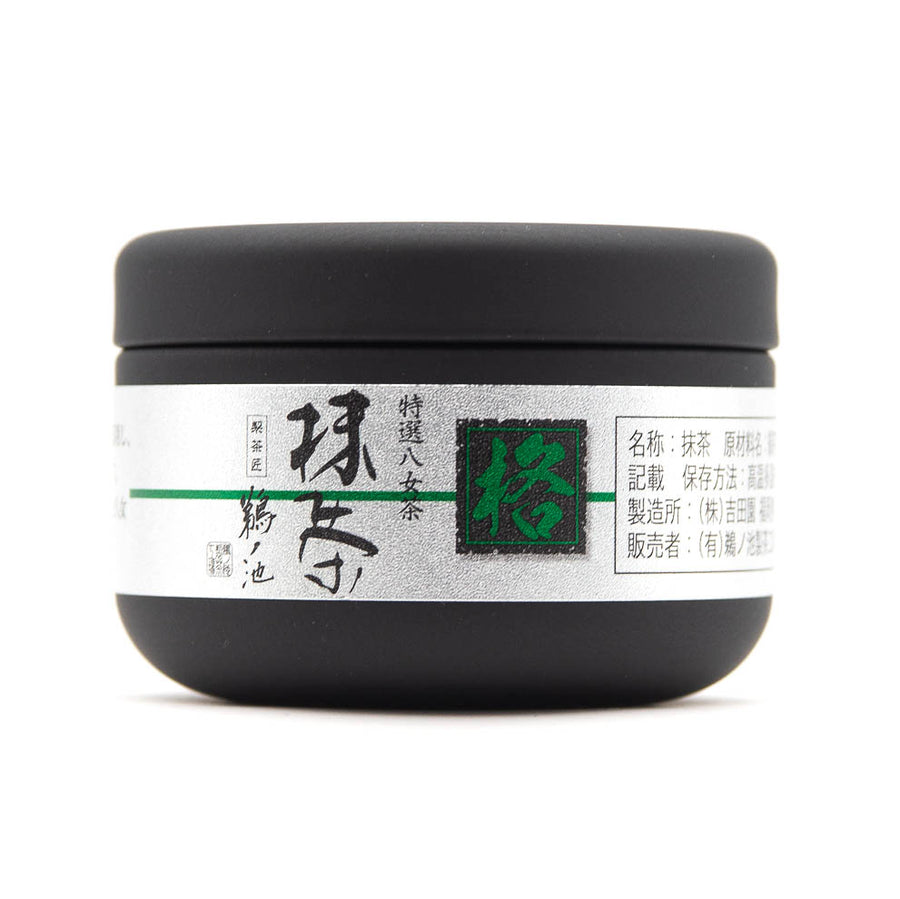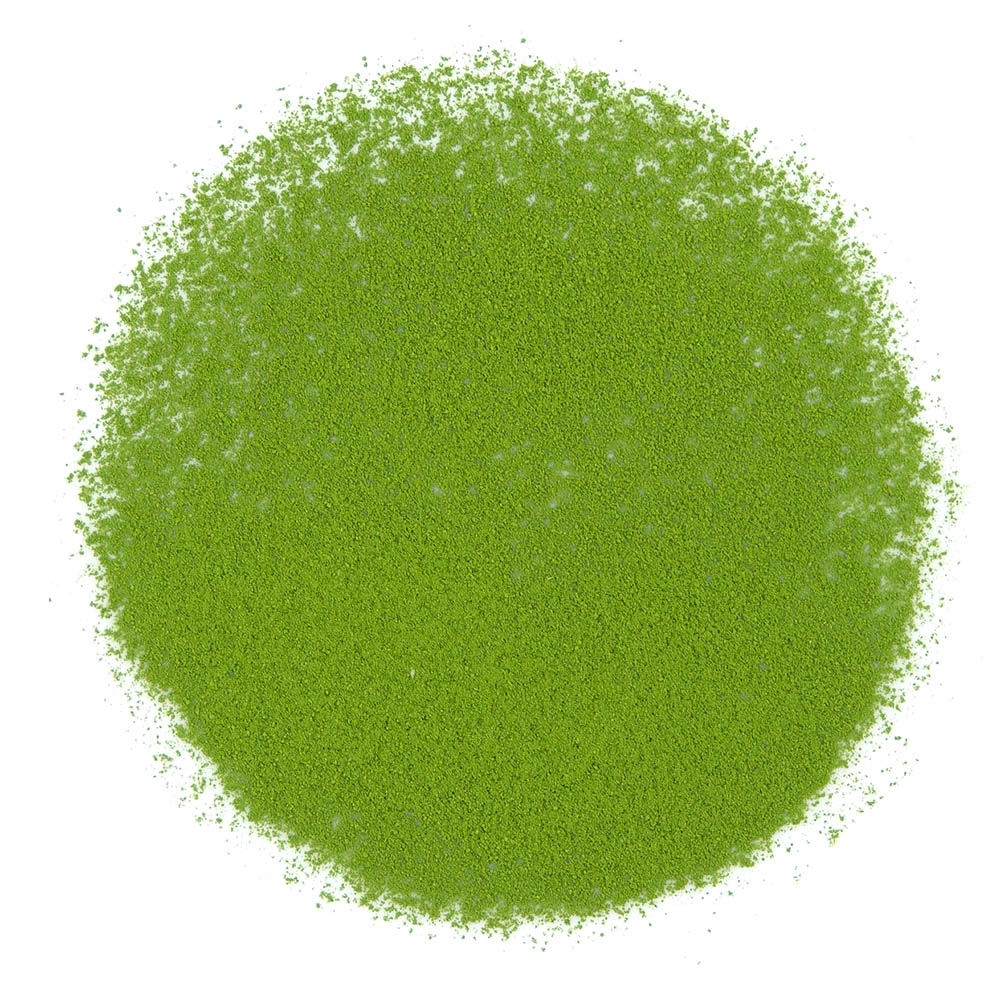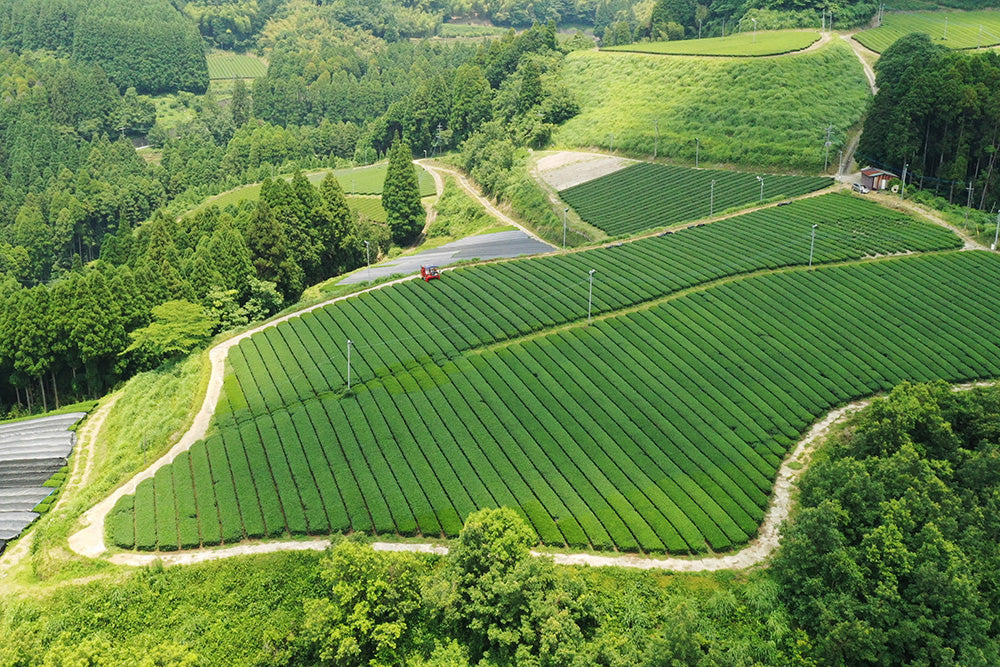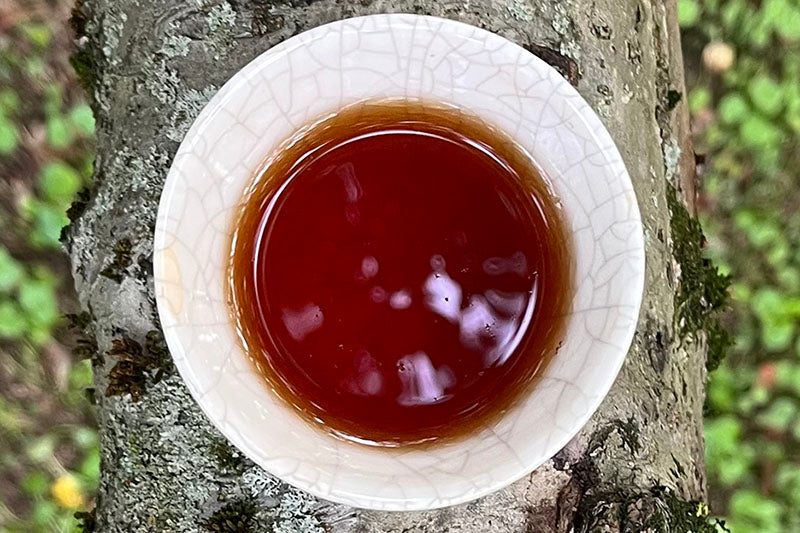ITARU COMPETITION CEREMONIAL MATCHA: TEA TASTING BY ALEX AHEARN
Name of the Product: ITARU
Type of Tea: Matcha
Producer: Mizota Chisako
Location: Yame, Fukuoka Prefecture, Japan
Harvest: May 2022
Read About Mizota-San’s Family Business Below.
Mizota-san’s tea journey started when she was 19 years old, growing tea with her husband shortly after getting married. She and her husband eventually went on to win the top prize at the All Japan Green Tea Competition, and their tea became well-recognized and sought out by tea drinkers across Japan and abroad. She hopes to continue the family business by sharing it with her grandsons in the future. Mizota-san’s teas exemplify the wonders of Yame and the unique characteristics of teas produced in the region.

ITARU Competition Ceremonial Matcha ready to be brewed (photo © Alex Ahearn)
Taste This Tea Like Mizota-San!
Mizota-san’s recommended steeping parameters.
Water: 70ml (1.76 fl oz)
Temperature: 80°C (176°F)
Matcha: 2g (~½ teaspoon)
Chawan (tea bowl)
Whisk
As I held the sleek black tin in my hand, I admired the attention to detail of the label and packaging. I slowly lifted the lid of the tin and removed the small silver bag. I placed it to the side and prepared my table to make matcha. I placed a chawan (tea bowl) in the center of the table, followed by a chashaku (tea spoon) and a chasen (tea whisk). I selected one of my tea towels, a furui (fine mesh sifter), and, lastly, a chasen kusenaochi (tea whisk holder), and placed them beside the chawan.

Silk-like foam (photo © Alex Ahearn)
It was finally ready to cut open the bag of matcha and watched as a small amount of the fine green powder escaped from the bag as it opened. The aroma of the matcha was delicately sweet with a noticeable vegetal finish. When I smelled the matcha again, there were slight hints of fresh dark leafy greens and lightly toasted hazelnuts or pine nuts. As I continued to smell the matcha, the underlying complexity and umami-rich characteristics of its aroma became more apparent and enticed me to finally prepare it.
While I smelled the matcha, my water kettle had heated the water to 80°C (176°F). I poured water into the chawan, about halfway, and rotated the bowl in my hands until the total surface area of the bowl was warmed. I placed the dry chasen into the bowl and allowed the bamboo to soften in the warm water. I then removed the chasen and poured the water into a separate bowl. I proceeded to dry the bowl with the tea towel in a few motions, then placed the sifter on top of the bowl and reached for the small sliver bag of matcha again.

Using the chashaku, I scooped 2 grams of matcha from the bag and slowly pushed the matcha through the sifter. I smiled as the vibrant green powder settled on the bottom of the chawan. I gently tapped the sifter against the top of the bowl and then smelled the slightly warmed matcha powder. It had a more noticeable nutty character, with aromatic notes of freshly steamed spring vegetables. I filled the bowl with about a quarter of the 70ml (1.76 fl oz) of water and watched as the powder became a rich and deep shade of green. I lightly whisked the powder and water into a paste with the chasen. I poured in the remaining amount of water and continued to whisk until the matcha started to become frothy. To whisk the matcha, I moved my wrist in "W" and "Z" motions and raised the elbow of the arm whisking the matcha to have more stability.
Once the matcha became frothy, I slowed down and moved the chasen along the bottom and side of the bowl. Then I lifted my wrist slightly to raise the chasen, just below the surface of the matcha where the tines were still submerged, and slowly whisked. As I whisked, the larger bubbles dissolved into finer bubbles, and the surface of the matcha smoothed out. This small step helps maintain the consistency of the foam at the top of the matcha. I lifted the chasen out of the bowl and placed it, with its tines upward, next to the bowl.

I held the bowl in my hands and raised it to my nose, taking a deep breath in. The nutty characteristics from when I first smelled the matcha were more present and balanced nicely with a stronger underlying vegetal characteristic. I lifted the bowl and took a sip. The matcha coated the sides of my mouth and my cheeks and had a silky mouthfeel. The toasted nut and vegetal characteristics were more noticeable after the matcha passed my lips then softened as the matcha stayed in my mouth longer. The characteristics were a little bit sweeter, like candied roasted nuts and cooked dark leafy greens.
The persistent umami-rich characteristic of the matcha was complemented with floral and nutty notes. The matcha had a surprisingly creamy and full body and lingered in my mouth long after my first sip with a gentle presence. There was a subtle bitterness in the back of my mouth that was eventually replaced with sweetness in the finish. The matcha’s umami characteristics were balanced with its delicate and persistent sweetness as I continued to enjoy the matcha until the last sip.
Mizota-san’s steeping parameters emphasize ITARU’s balanced umami-rich and delicately complex characteristics of this smooth and full-bodied matcha. This matcha may be enjoyed as thin (usucha) and thick (koicha). To make koicha matcha, use 4 grams (~1 teaspoon) of matcha and 30ml (~1 fl oz) of water at the same temperature, and whisk into a thick paste.

Deep and concentrated, a true Matcha-espresso experience.
Make This Tea For Any Occasion!
Iced Preparation:
This matcha can be enjoyed iced as well. It can easily be made in a 250–300ml (~8.4–10 fl. oz) bottle or jar. This preparation method captures the matcha’s vibrancy and lingering sweetness. Sift 2-3g (~1 teaspoon) of matcha and put it in a bottle or jar.
Add a few ice cubes, enough to just cover the matcha, and fill the bottle or jar with cold filtered water, leaving a little bit of space at the top. Close bottle or jar and shake it until frothy and enjoy immediately.
Food Pairing Recommendations:
You may enjoy this matcha by itself or pair it with something simple like a wagashi or a piece of chocolate.








Leave a comment